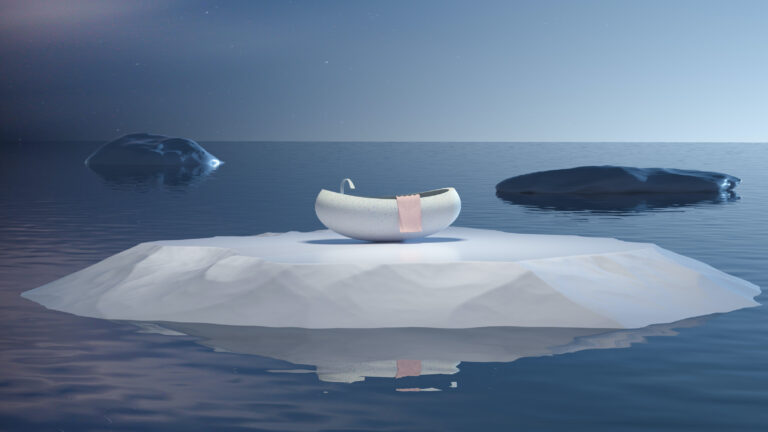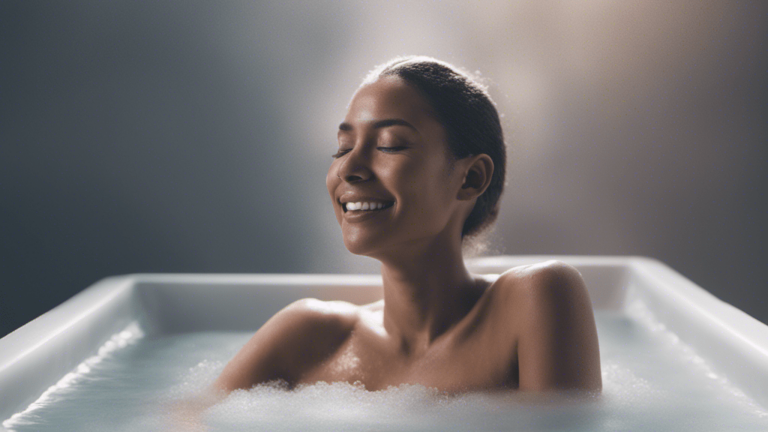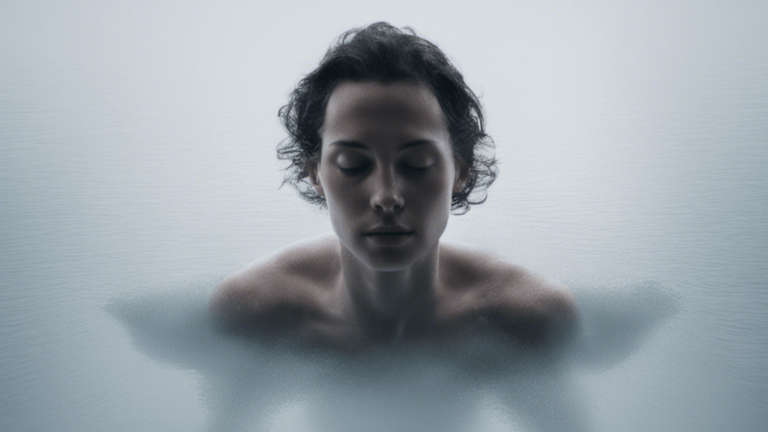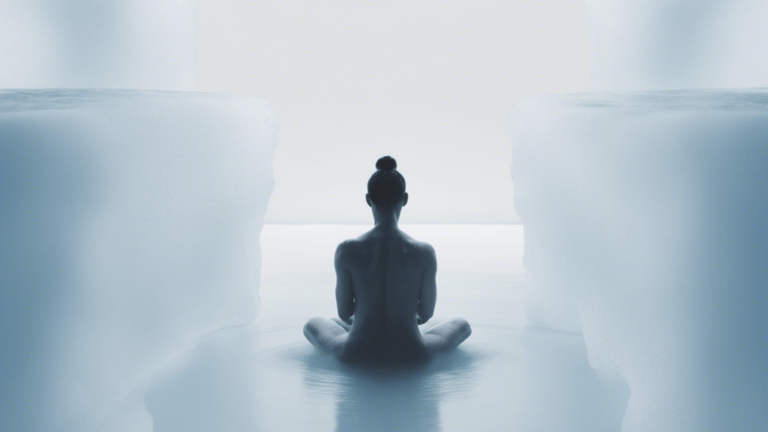5 Benefits of Ice Baths for Sleep and How to Do It Right
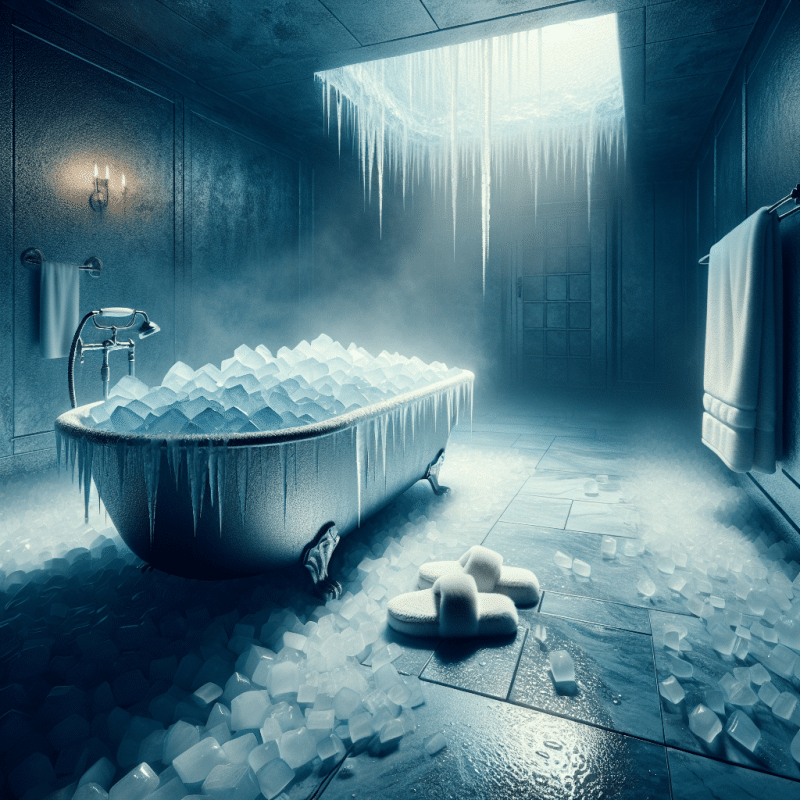
No one can deny the rejuvenating power of a good night’s sleep, yet few realize that the key to achieving this lies in some unexpected places—including some surprisingly cold ones.
Ice bathing has been a wellness practice for centuries, whether a chilly dip in a natural body of water or a carefully controlled plunge in your bathtub. Stemming from ancient cultures and adopted by modern-day health enthusiasts, this invigorating ritual holds more perks than one might realize.
Emerging ice bath research points to startling potential benefits of this frosty therapy. Among those are improved athletic performance, reduced muscle soreness, and enhanced recovery rates. Hence, these therapeutic cold treatments are popular among fitness professionals and athletes.
However, one of the lesser-known yet equally intriguing cold water immersion benefits revolves around sleep. While you may not connect sitting in cold, icy water and better sleep quality, the physiological and mental effects of cold water therapy in improving one’s sleep patterns are impressive.
Unveiling the benefits of ice baths for sleep will show you only a few of the amazing benefits this wellness therapy has to offer. What’s more, you’ll learn the proper ways to implement this technique, ensuring a safe and beneficial journey into cold therapy.

Understanding Ice Baths
Ice baths’ advantages go beyond what most people initially assume. They may seem like an extreme wellness trend, but their historical context and scientific backing strengthen their credibility. Taking ice baths comes from traditions and cultures that appreciate the benefits of cold water immersion, also known as cold water therapy.
From Scandinavians partaking in saunas followed by ice bath recovery dips to Greek physician Hippocrates advocating for hydrotherapy, the practice of cold water immersion is nothing new. In the 17th, 18th, and 19th centuries, cold water immersion therapy was used to treat fevers, amongst other conditions. Today, scientists better understand how cold water affects both body and mind.
Over the years, modern science has started unraveling the physiological effects of ice baths, underscoring their function in improving athletic performance, reducing muscle soreness, and offering a much-needed circulation boost. Moreover, scientific research investigates how ice baths affect the mind, indicating that this practice improves discipline, reduces stress, and increases relaxation.
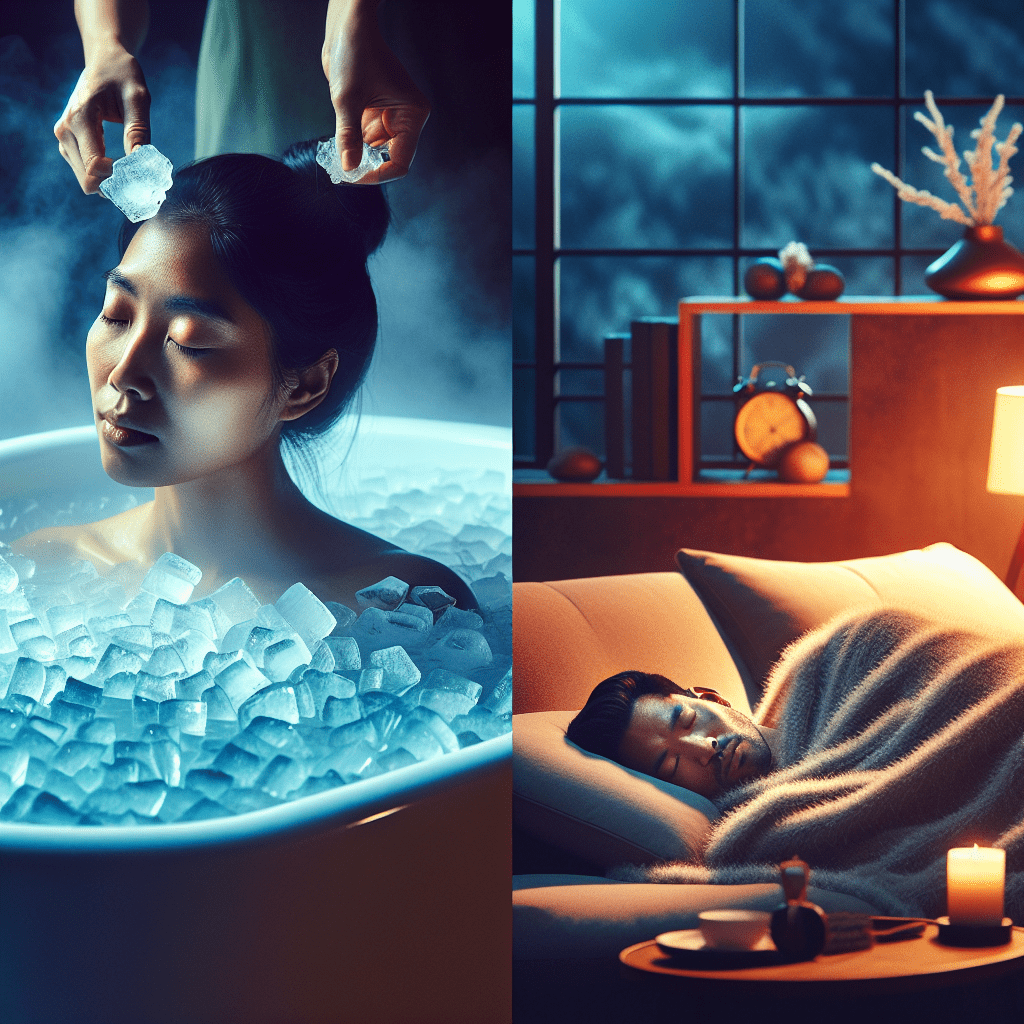
5 Benefits of Ice Baths for Sleep
From physical changes in the body to mental and emotional changes, ice baths offer several benefits that directly relate to improving sleep quality. Cold immersion therapy not only helps recover overworked muscles but also triggers the release of a mixture of hormones that aid in making you feel sleepy and relaxed. Mentally, ice bathing offers mental clarity, key to fostering a deep and restful sleep.
Here are five ice bath benefits for sleep.
- Reduced Muscle Pain
Ask any athlete about their post-workout recovery routine; ice baths will likely feature prominently. This is due to the ice bath’s recovery benefits, which make it instrumental in improving athletic performance. But how does this contribute to better sleep?
Ice baths largely facilitate muscle recovery and repair because they can reduce inflammation and local edema. This reduces muscle pain and soreness that can come from a strenuous workout. This effect is critical in promoting a good night’s sleep.
- Regulate Body Temperature
A key component of the sleep-wake cycle is the body’s core temperature decreasing in the evening, signaling the body to sleep. A dip in an ice bath lowers your body temperature, triggering your body’s desire to sleep. A cold plunge causes the body to produce melatonin, a natural sleep hormone that helps you fall asleep faster and stay asleep longer.
- Promote Relaxation
The physiological effects of ice baths include the calming effects on the nervous system. The shock of the cold is initially stimulating, triggering a flurry of responses in the body. But once you settle into the sensation, you may notice a sense of tranquility under the extreme cold. This response encapsulates the body’s activation of its parasympathetic nervous system and activates a state of calm and ease.
Relaxing from a pre-bedtime ice bath may contribute to more uninterrupted sleep, minimizing wakeful interruptions and helping you maintain a consistent sleep schedule.
- Stress Reduction
Stress management plays a significant role in the quality and duration of sleep, and ice baths can be a valuable tool in this regard.
Cold water immersion profoundly affects the body’s stress hormone cortisol. However, cortisol isn’t the only hormone affected by cold exposure. When the body experiences an ice bath, the body releases a mix of “feel-good” hormones, including endorphins, dopamine, and norepinephrine. This mixture acts as a natural mood enhancer and stress reliever, giving you mental clarity and an improved mood.
Regular exposure to cold water therapy teaches the body to become better at releasing endorphins when needed. This helps to relieve everyday stress better, allowing you to sleep soundly.
- Increased Discipline
Taking a cold plunge might sound easy, but it requires mental preparation beforehand. It can be difficult to force your body into discomfort regularly. However, you build discipline by making ice baths a regular part of your health and wellness routine. One area of life where discipline is important is your nightly sleep schedule.
The discipline skills you gain through pushing through the discomfort of ice baths will help you make healthy choices before bed. Having an established routine of relaxing activities before bed—a regimen that could include a soak in an ice bath—cues your body that it’s time to unwind and prepare for rest, leading to more consistent and restorative sleep patterns.
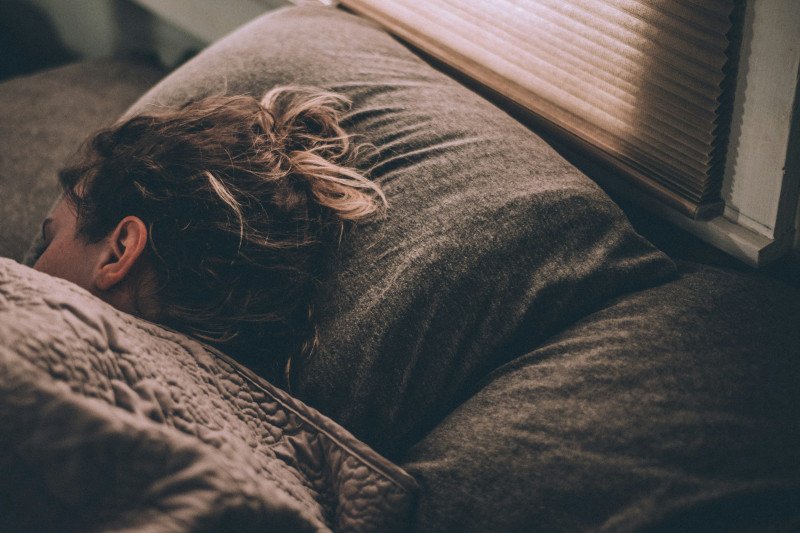
Ice Baths and Sleep
The connection between ice baths and quality sleep may not seem immediately apparent, but recent scientific insights and anecdotal evidence have begun to reveal a surprising correlation. Initial studies hint at how emerging cryotherapy benefits might cater to healthier sleep patterns, opening up a new facet to this frosty endeavor.
Though the evidence is still anecdotal, the transformative effects reported from weaving ice baths into evening routines echo the scientific literature’s suggestions, compelling further exploration and research of this therapeutic cold treatment.
Improved Sleep Quality
One of the most significant advantages of an ice bath is its potential to improve sleep quality. Sleep quality involves the duration and depth of sleep stages, which are vital to overall health and well-being.
Cold therapy, such as ice baths, can induce deeper sleep when the body heals, restores, and refuels itself. Concurrently, ice baths can heighten sleep duration, providing you with those extra minutes (or even hours) of slumber that make all the difference in feeling refreshed upon waking.

How to Do Ice Bathing Right for Sleep
The Right Frequency and Duration
Like any wellness practice, developing the right routine is crucial to fully gaining the advantages of ice baths. However, determining this routine requires expert guidance, observation, and careful understanding of one’s body’s responses. Individual thresholds for cold temperatures vary greatly, and so will each person’s optimal frequency and duration of ice baths.
For beginners, taking the plunge into the icy waters must be done cautiously. A sensible starting point may be a quick dip of 1-2 minutes in a moderately chilled bath. From there, slowly increase the time and chill factor as your body adjusts to the sensation and recovery process.
When it comes to frequency, a good rule of thumb could be to start with two or three home-held ice bath sessions a week, gradually progressing to shorter soaks daily as you become acquainted with the practice. Regardless of how used to the chill you become, always prioritize safety and listen to your body. Incorporating ice baths into your routine should not be rushed, and taking the time to understand your comfort level is key.
The Timing of Ice Baths Relative to Sleep
Timing is a significant factor in using ice baths to enhance sleep quality. Although it might seem sensible to jump straight from your ice bath into bed, it is advisable to give your body time to adjust and recover after an intense cold water therapy session.
An ideal gap between your ice bath time and bedtime may range from 1 to 2 hours. This interval allows your body temperature to regulate naturally post-bath. It provides a window for any immediate alertness caused by the cold to diminish, easing the transition into a calming pre-sleep mode.
It’s worth noting that while early evening can be an optimal time for icy immersion aimed at enhancing sleep, ice baths initiated too close to bedtime (less than an hour) may disrupt your body’s ability to fall asleep.
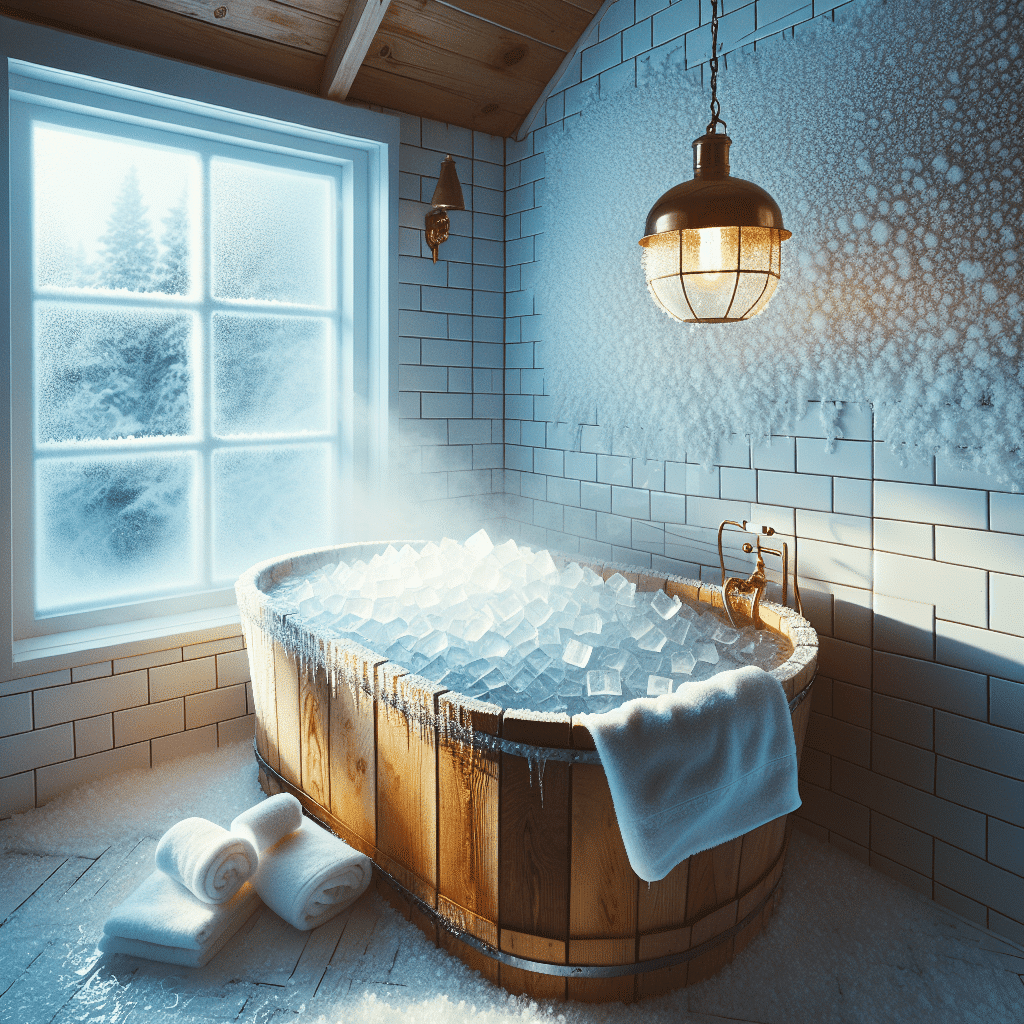
Extra Tips for Enhanced Sleep Results
- Adding meditation into your ice bath routine can significantly enhance the calming effects of this practice, further setting the stage for a nourishing and restful sleep. If you are concerned about meditating during your bath or find it difficult to meditate in the cold water, try meditating post-ice bath as your body warms.
- Deep breathing exercises, focusing on mental calmness, and visualizing yourself in peaceful scenes can be particularly beneficial during the initial immersion when the body reacts strongly to the cold. Developing mental strength not only eases your cold therapy health perks but also paves the way for improving your lifestyle holistically. This is the first step to building discipline around ice baths.
- Dietary considerations regarding the hours leading up to your ice bath and bedtime are also crucial to this wellness practice. Refrain from consuming caffeine or heavy meals before your ice bath, as these could disrupt your body’s natural thermoregulation process and hinder the path toward tranquil sleep. Always talk to your medical provider before making any major changes in your diet.
The Importance of Correct Procedures
Setting up an ice bath is relatively straightforward: fill a bathtub or tub with cold water, add ice, and immerse oneself gradually and mindfully. However, incorrect techniques or misuse can potentially be hazardous.
Precautions such as avoiding exposure for prolonged periods, ensuring your body is not in shock, and monitoring heart rate and body reaction are crucial safety nets for this practice. Moreover, anytime water is involved, there is a risk of drowning, no matter how small. So make sure to keep your head above water while bathing. Conditions like hypothermia and cardiac arrest are real threats if you’re not careful.
Always consult with a healthcare professional before starting a new wellness regimen. Remember, the purpose here is to attain the numerous health perks of ice baths without compromising safety.
Discovering the Chilling Pathway Towards Revitalizing Sleep
Understanding the marvels of ice baths in sleep enhancement is an adventurous journey. It unveils a fascinating intersection of ancient wellness practices, athletic training strategies, and science-backed research. As strange as it might sound to some, submerging yourself in icy water can be a ticket to a calming, deep, and rejuvenated sleep, as indicated by studies and research.
Ultimately, we encourage you to immerse yourself in the frigid yet fascinating world of ice baths. This chilling tradition offers an intriguing avenue to explore improved sleep, faster athletic recovery, and a zen state.
Remember, wellness is as much a journey as it is a destination. As you stay consistent, patient, and open to new experiences, you might be pleasantly surprised by the icy secrets unraveled by these therapeutic baths—one chilled step at a time.

